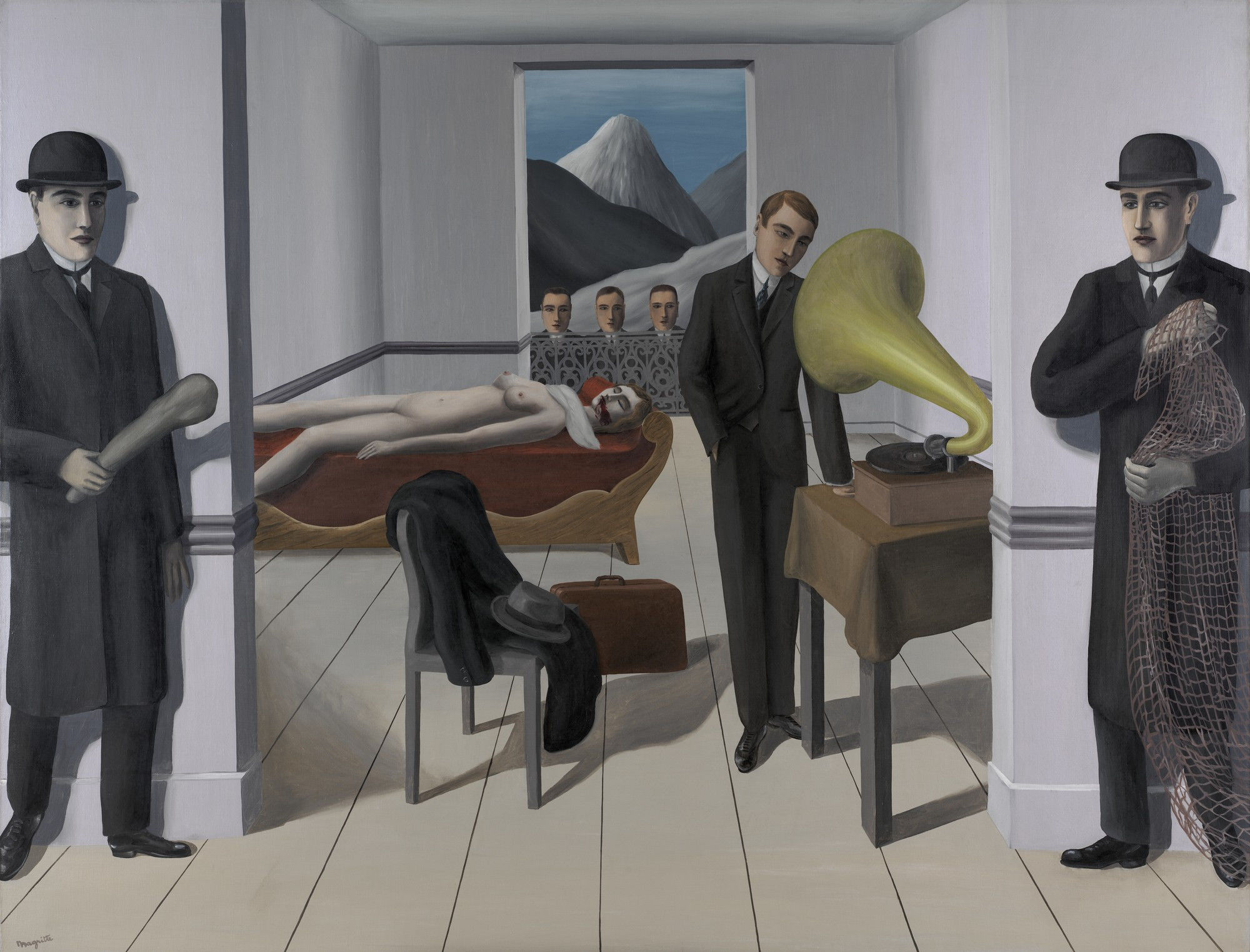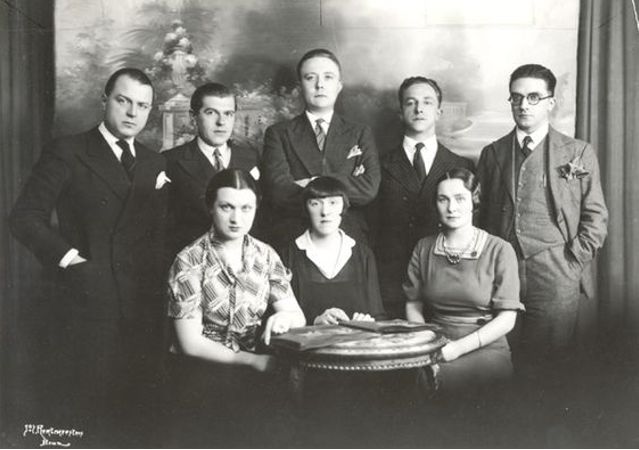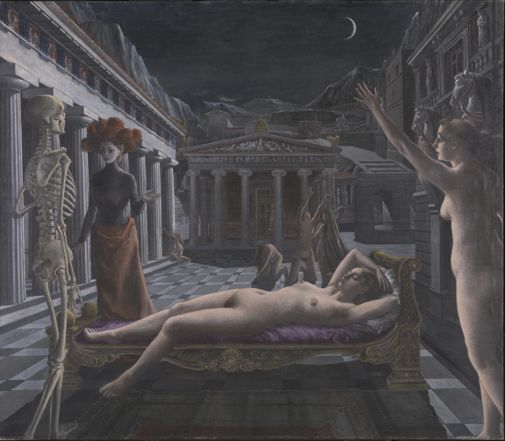Brafa Art Fair Special: Surrealism in Brussels
With the upcoming Brafa Art Fair in mind (27 January – 4 february 2018), our previous article shedded some light on the cultural climate of fin-de-siècle Brussels. Now let's take a look at the Belgian Surrealist movement of the 1920's...
The Belgian Surrealist movement has always been overshadowed by its French counterpart, which was formally launched by André Breton in 1924 in Paris. Yet the artistic and literary movement that took place in Brussels was almost as large in scale as the French movement, emerging around the same time.
The Belgian surrealists wanted, just like their French colleagues, to express the realm of dreams and the inner world of the psyche in the arts. However, in some ways Brussels’ surrealism movement differed from that of the French capital.
The Belgian Surrealist Group, 1934. Sitting from left to right: Irène Hamoir, Marthe Beauvoisin, Georgette Magritte. Standing from left to right: E.L.T. Mesens, René Magritte, Louis Scutenaire, André Souris, Paul Nougé.
On an artistic level, they criticized the way their Parisian counterparts analyzed their dreams and the subconscious. Politically speaking, the French surrealists’ involvement in the Communist Party didn’t sit well with the Brussels’ surrealist group, anonymity and independence were regarded very important by them.
The Belgian surrealists lived in dreary suburbs and dressed themselves as “petits-bourgeois”. They were inspired by everyday objects and daily life; a clear rebellion against bourgeois society. Unlike their French counterparts, the Brussels surrealist never literally formed a group, but existed more as a circle of friends, parttaking in a collective activity.
They came together disparately and published separate journals over the years 1924-1928, including Correspondance (1924), Œsophage (1925), Marie (1926) and Distances (1928).
Renowned artists such as René Magritte, E.L.T. Mesens, Paul Nougé, Marcel Lecomte, André Souris and Louis Scutenaire belonged to the group, they joined in 1928.
While the Surrealist circle was not primarily made up of visual artists (poets and writers also took part), the painter René Magritte was its principal representative. He was also the only one to become internationally known during the late 1950s.

René Magritte, L'Assassin Menacé, 1927, Museum of Modern Art New York.
In Magritte’s work, ordinary objects are often depicted within an unusual context, challenging observers’ preconditioned perceptions of reality. His art is at times violent, disturbing, and mysterious, as is reflected by his painting L’ Assassin menacé (The Menaced Assassin, 1927): it shows the nude body of a young woman, lying on a chaise longue.
Blood pours from the corner of her mouth. A man, presumably the murderer, is seen nonchalantly listening to a gramophone. Two men await the assassin with a bludgeon and a net. In the background three male heads appear above the balcony railing.
The picture raises several questions: who is the female victim? Why is the gentle young man listening to music next to his victim? And who are the enigmatic figures in the background and how did they get there? The mystery and the sense of impossibility that this scene evokes is typical of many of Magritte’s works, comparable to a puzzle that can’t be solved.
Paul Delvaux, Sleeping Venus, 1944, Tate Modern, London.
Even though he did not consider himself to be an official Surrealist, the painter Paul Delvaux associated with the Belgian circle around Magritte for a while as of 1937.
His work is generally characterized by a dreamlike and mysterious atmosphere, featuring several Neo-Classical women, usually nude, who are placed in unlikely settings: Italian piazzas, Greek ruins, or the parks and squares of Brussels.
Sometimes the women are accompanied by uncanny figures, like skeletons, men in bowler hats, or puzzled scientists. Delvaux would repeat variations on these themes for the rest of his life.
Despite the fact that Delvaux is slightly more unknown than his compatriot Magritte, he is recognized as one of the most important representatives of Belgian Surrealism nowadays.
Henri D’ Ursel, La Perle, 1929, film still.
Finally, the relatively unknown cinematographer Henri Count d’Ursel (1900-1974) is also associated with the surrealistic movement in Brussels, even though he was not a formal member of Magritte’s group.
In 1929, D’ Ursel directed a surrealistic short film, La perle (The pearl), based on a poem by Georges Hugnet. In the film, a young man tries to track down a pearl that has fallen from the necklace that he just purchased for his girlfriend.
Along the way, he encounters elusive and sensual women. Unfortunately, this charming and elegant piece of Belgian surrealist cinema sank into oblivion, possibly because it was the only movie d’ Ursel has ever made.
For more surrealism please have a look at our online collection at Gallerease!
Main Image: René Magritte, L’ Assassin Menacé (The Menaced Assassin), 1927. Oil on canvas, the Museum of Modern Art, New York.




